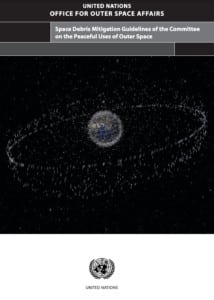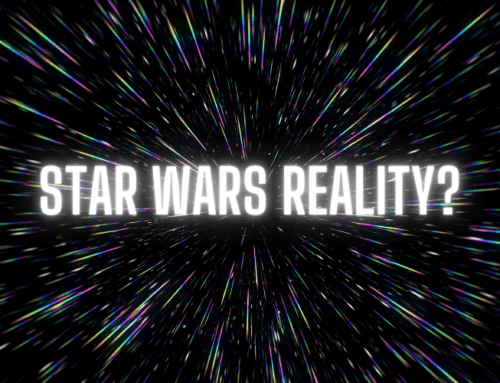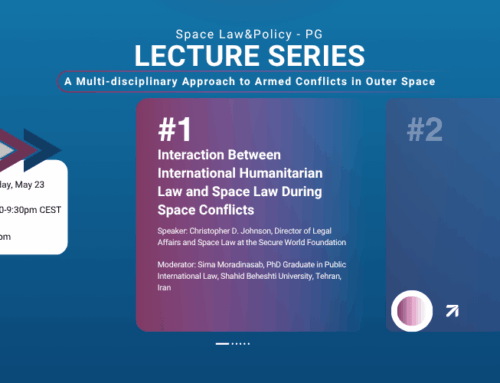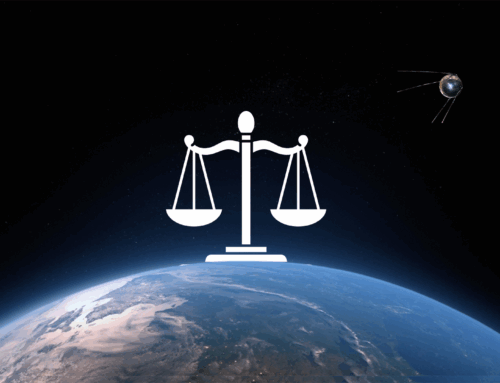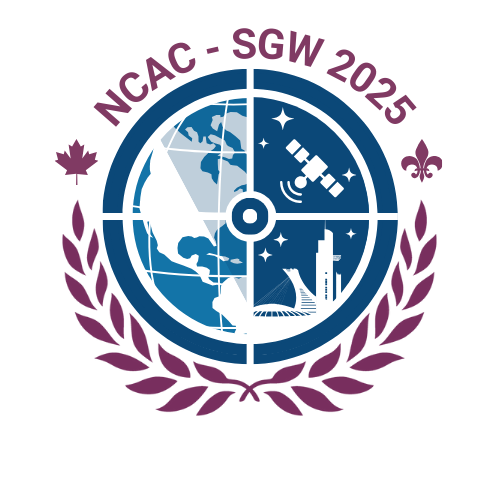“Through comprehensive and coordinated regulatory efforts, space actors may be compelled to act more responsibly throughout design, procurement, operations, and disposal; ultimately preventing congestion of the shared environment and ensuring all generations have a chance to benefit from space.”
In 2023, the UNCOPUOS Space Debris Mitigation Project Group, a collaboration between the Space Law and Policy Project Group and the Space Safety and Sustainability Project Group, conducted a review of the UN Space Debris Mitigation Guidelines to analyze its effectiveness and identify gaps. The result was a final paper titled, “On the UN Space Debris Mitigation Guidelines: A Review and Proposal for Effective Norm Building.” Below is an excerpt.
As the number of satellites and human-made objects launched into space increases, so does the risk of collisions and the generation of more debris. Satellites in Low Earth Orbit (LEO) and Geostationary Orbit (GEO) are particularly vulnerable due to their high concentration of space objects. These locations have been highly favourable for missions and have continued population growth in recent years. Collisions generate more debris fragments, further increasing the density of debris in certain orbits. To address the threat of space debris, there are international efforts and guidelines in place. The Outer Space Treaty (OST), the foundational legal framework for space activities, emphasises the importance of responsible national space operations, observing the principles of “international responsibility” and “due regard”. It calls upon States to adopt “appropriate” measures to avoid “harmful contamination” throughout space missions. This appeal to national responsibility extends to space debris mitigation measures.
In 2014, the United Nations (UN) Committee on the Peaceful Uses of Outer Space (COPUOS) compiled submissions to form the Compendium of space debris mitigation standards adopted by States and international organisations (The Compendium), representing best efforts to establish norms of behaviour for space debris mitigation. State-based ‘command and control’ regulation is vulnerable to some modes of failure. Information failure may arise from the asymmetry between the regulator and the regulated, while motivation failure results from the disinterested nature of state regulation, which does not strive to maximise the potential of the regulatory tools in problem-solving market failures–instead merely maintains a minimum acceptable standard of upholding international legal and political obligations. Although these ‘command and control’ measures prevent gross departures from responsibility, they do not encourage excellence; it is possible to do the bare minimum to comply, with little incentive to do more.
Although comparative analyses of space law exist, no previous research has taken this specific focus on the Compendium outputs. This project has also included general research into non-reported State practices, such as domestic space laws in non-UNCOPUOS States, insofar as they relate to space debris mitigation standards. Understanding the current state of state-based space regulation means that new efforts and reforms can benefit from hybrid models which merge strengths and eradicate weaknesses. Through comprehensive and coordinated regulatory efforts, space actors may be compelled to act more responsibly throughout design, procurement, operations, and disposal; ultimately preventing congestion of the shared environment and ensuring all generations have a chance to benefit from space.
⇲ Read or download the final paper, “On the UN Space Debris Mitigation Guidelines: A Review and Proposal for Effective Norm Building.”

